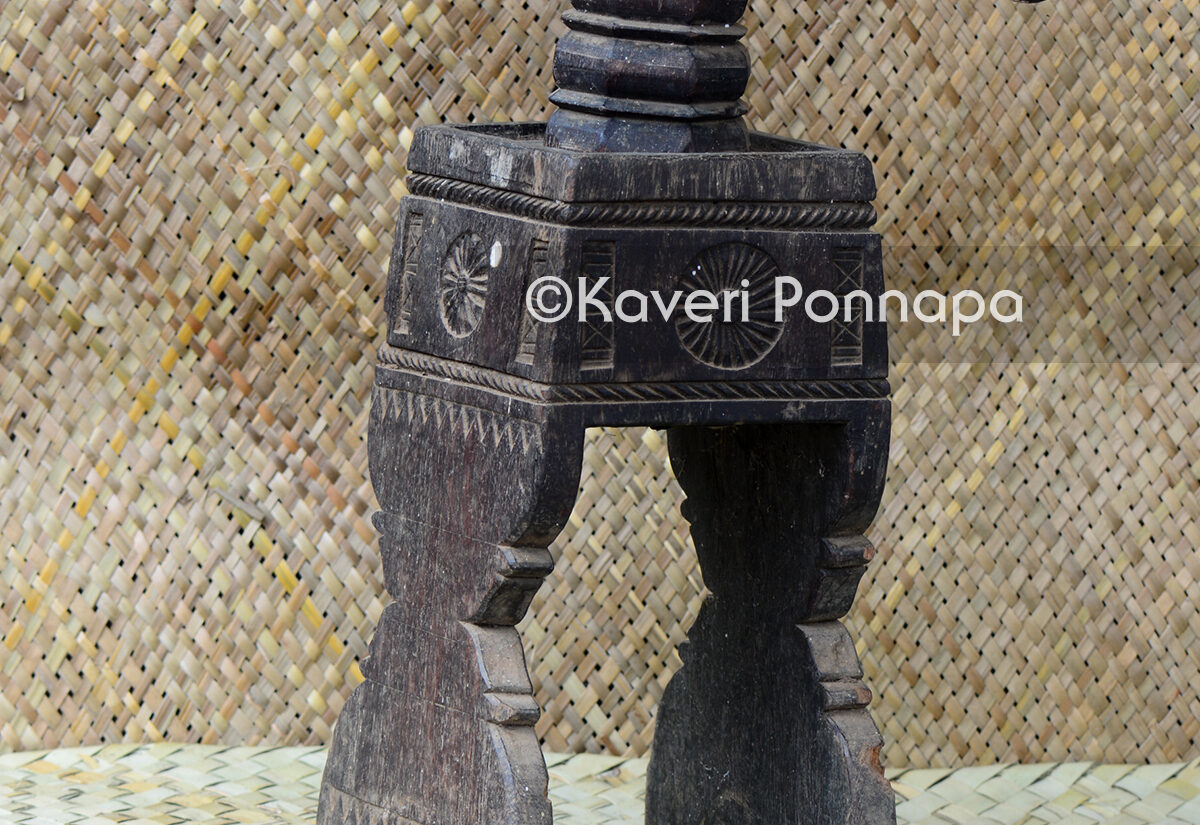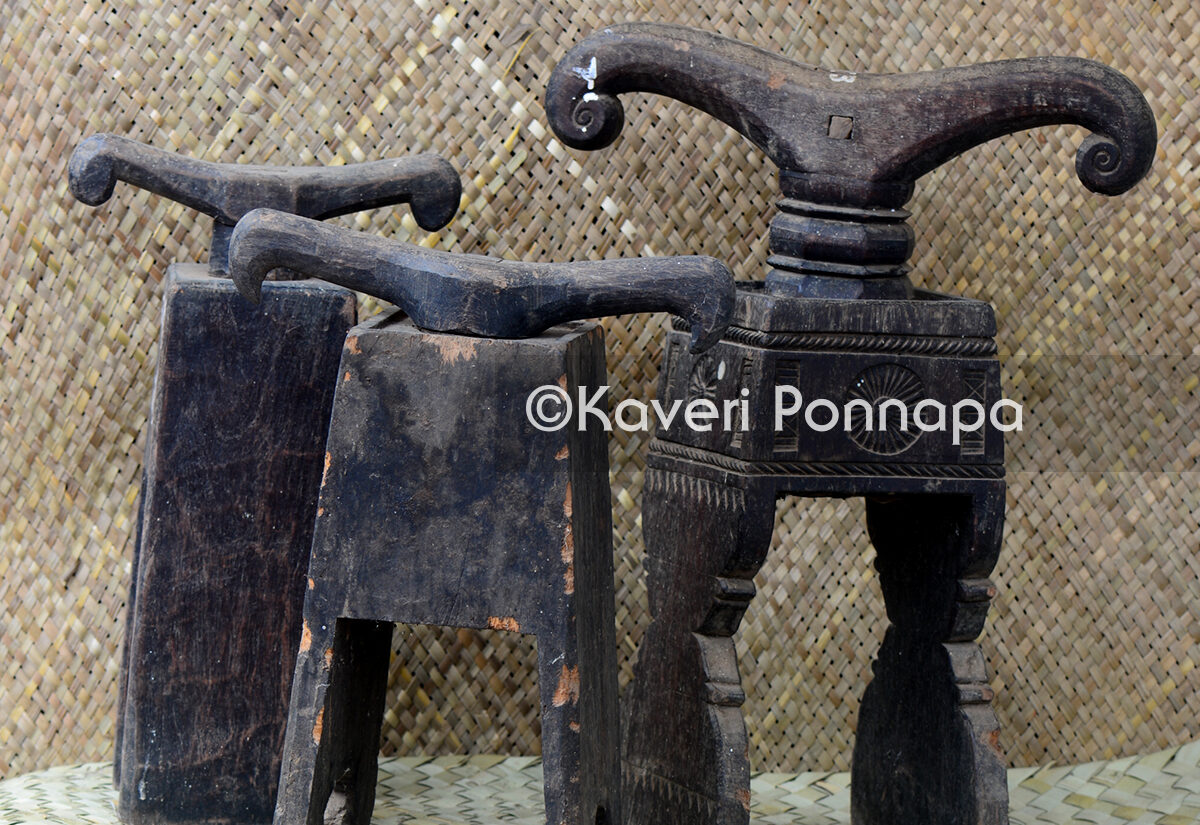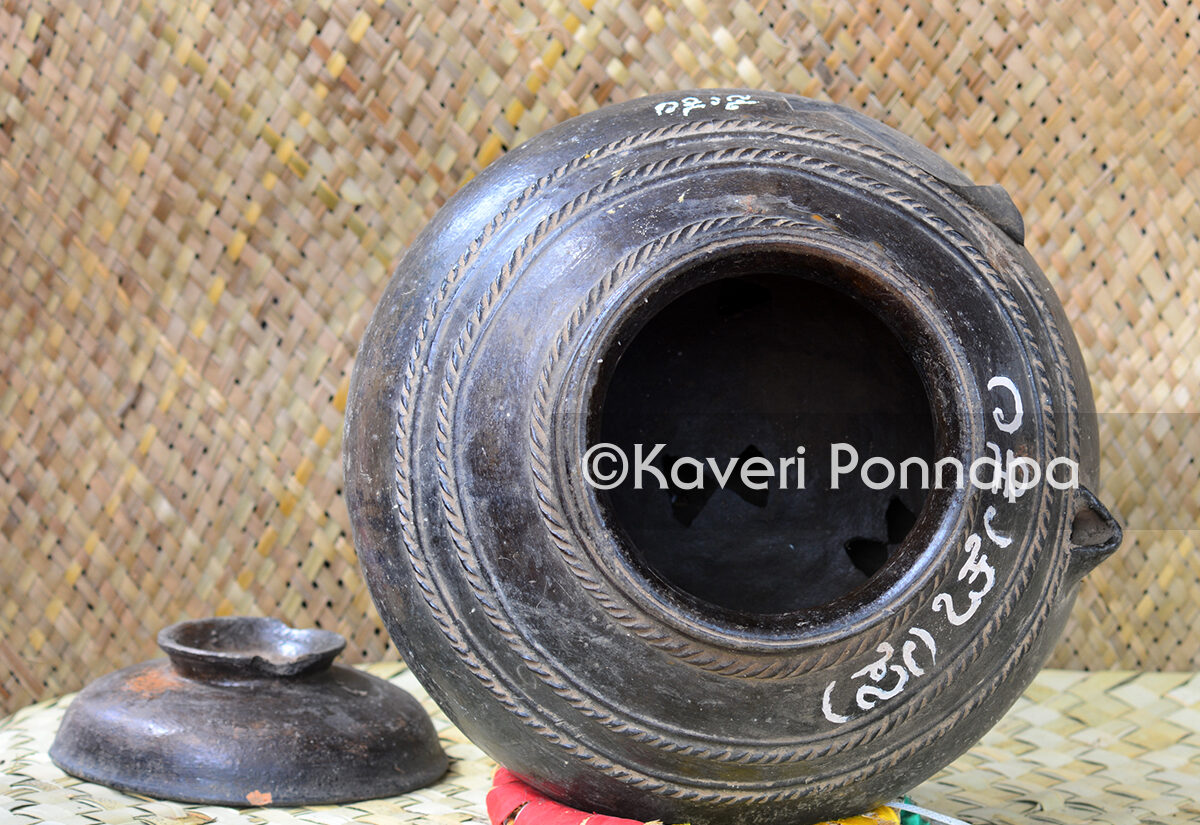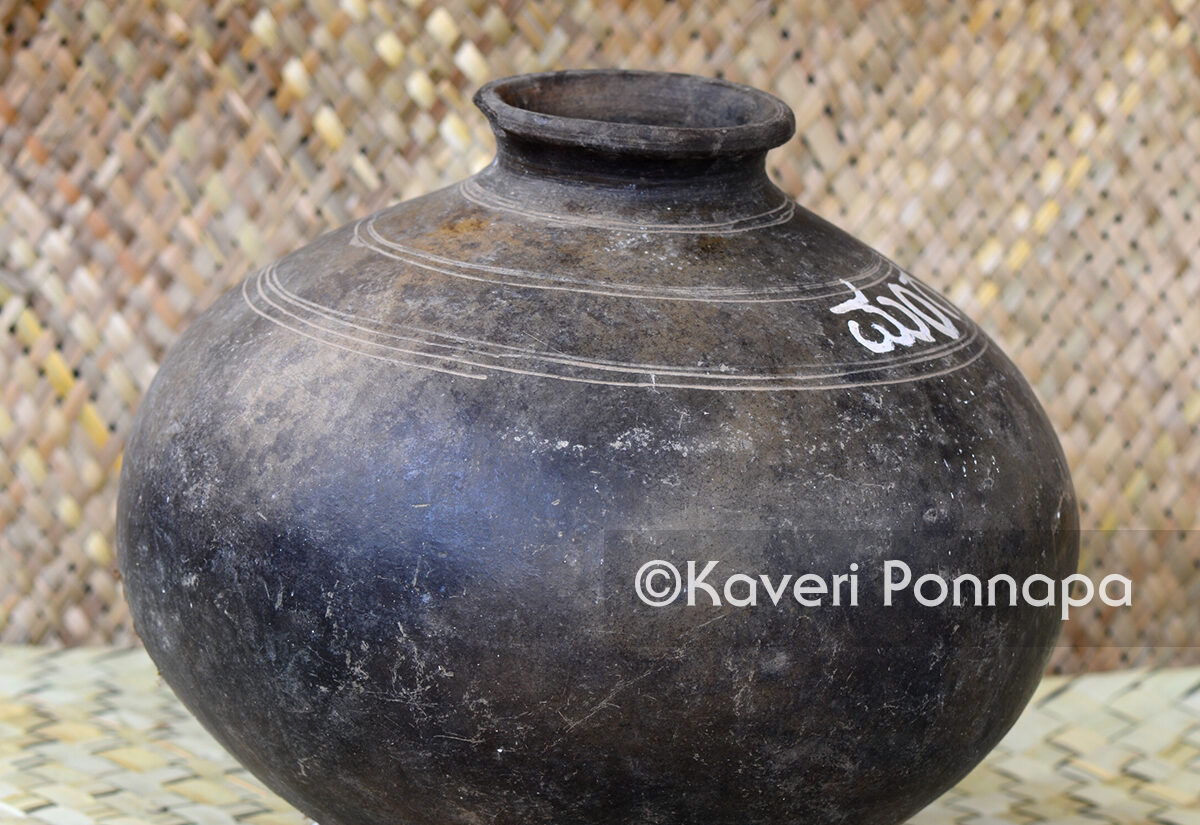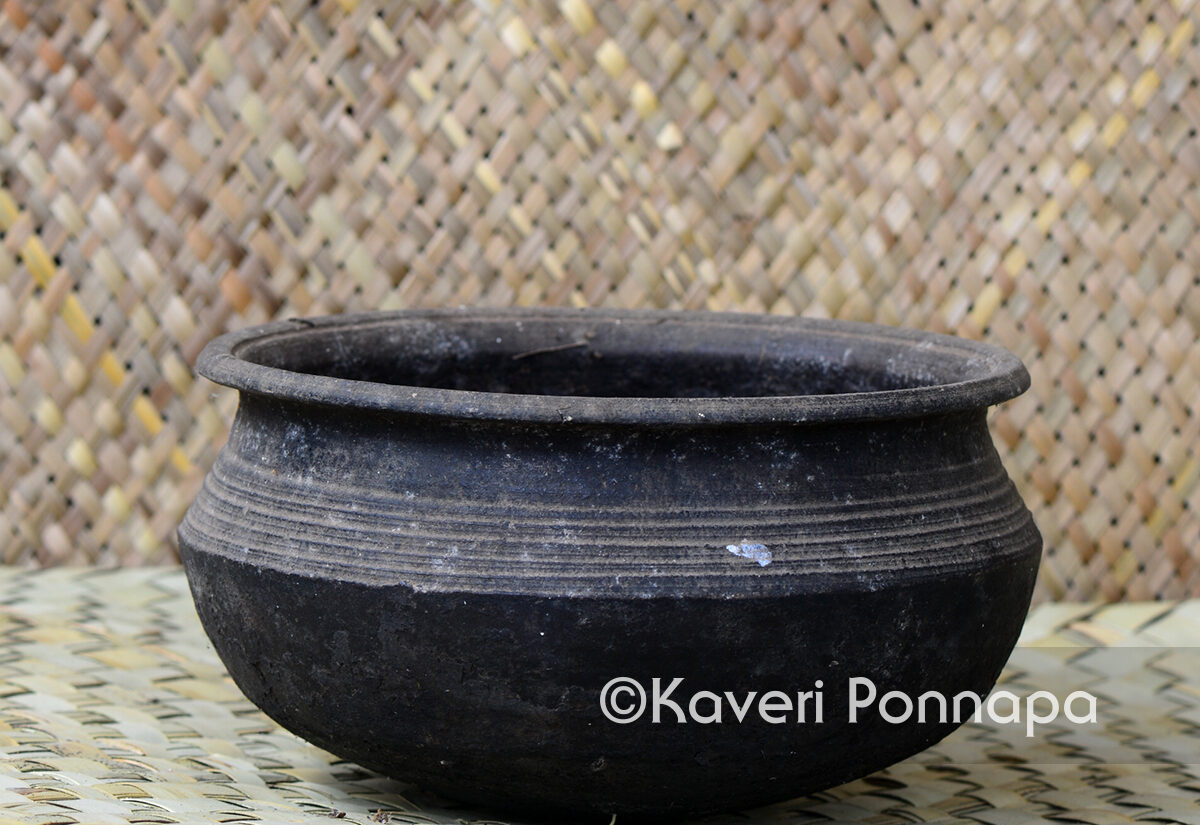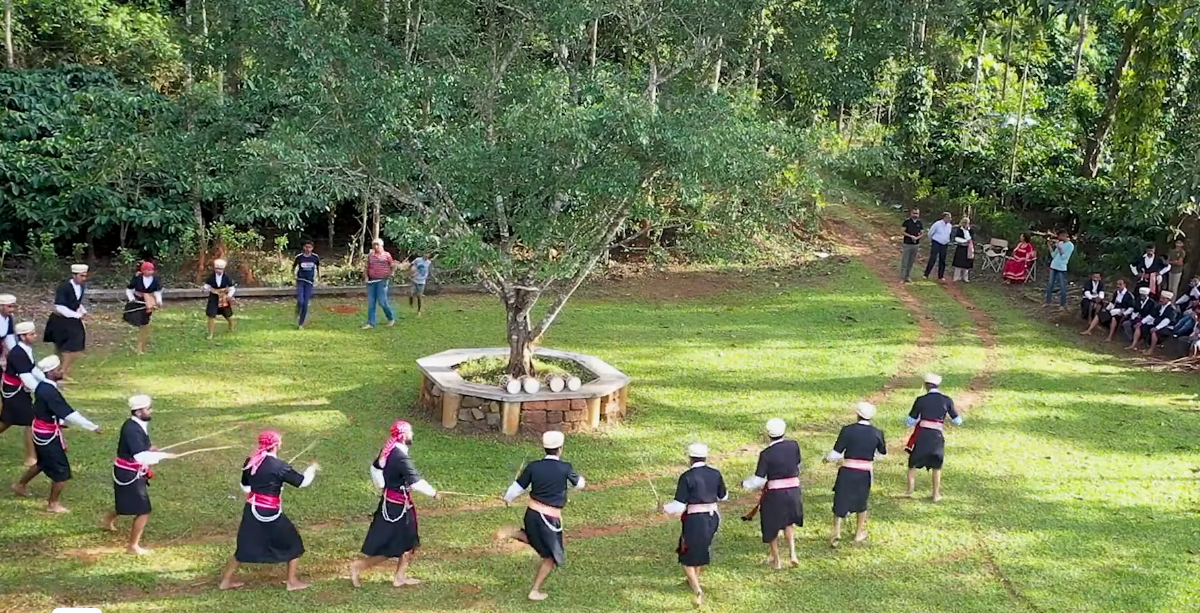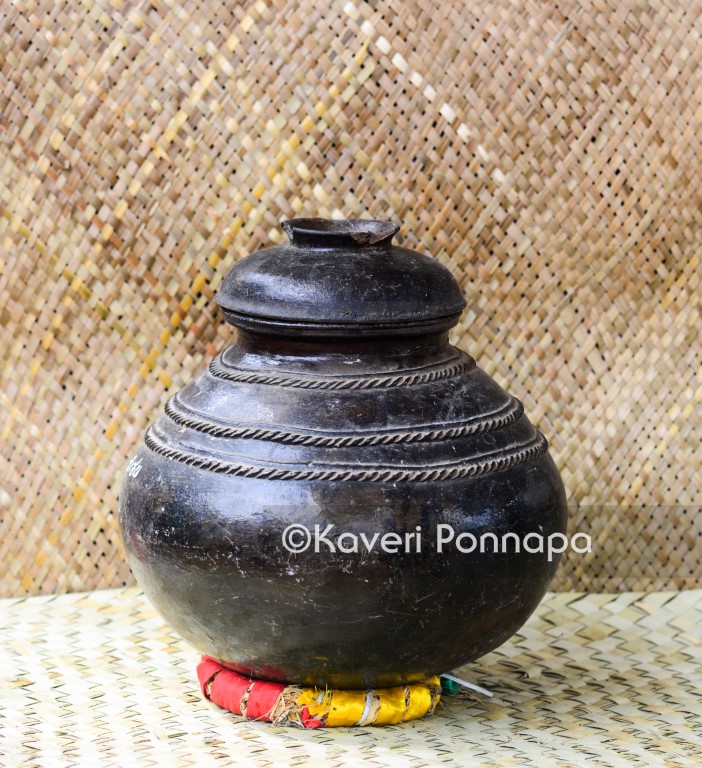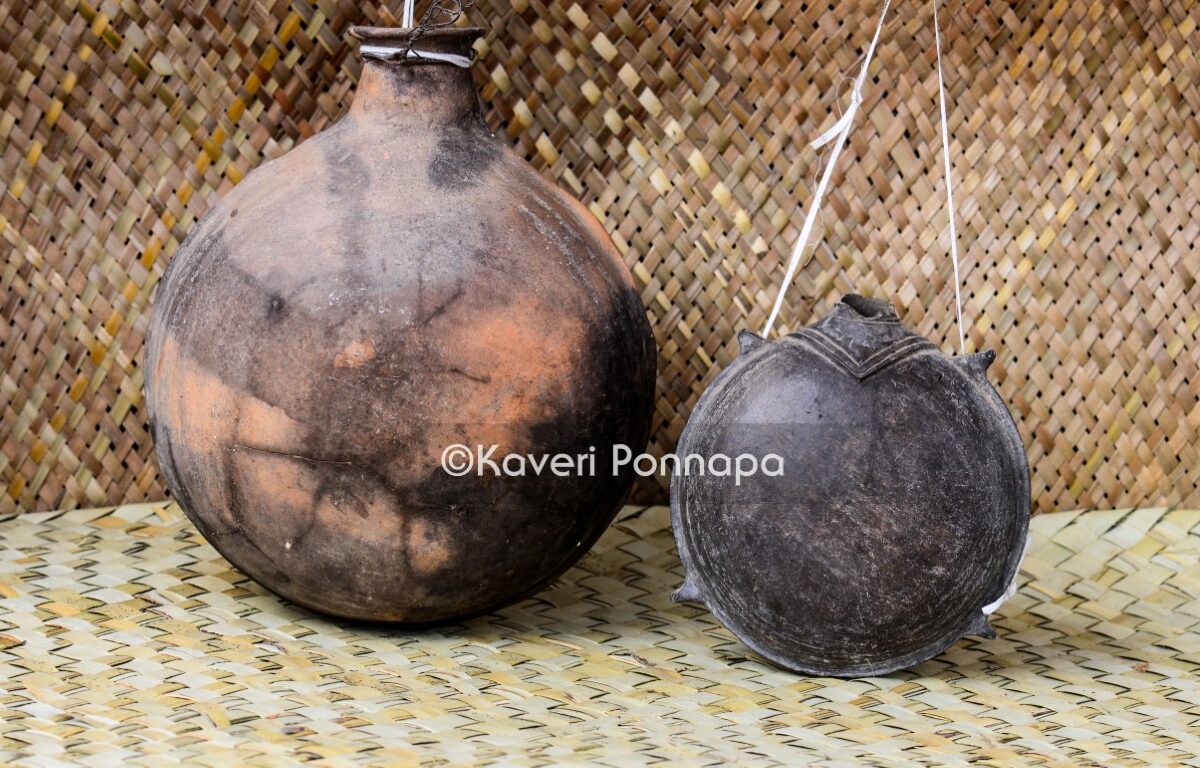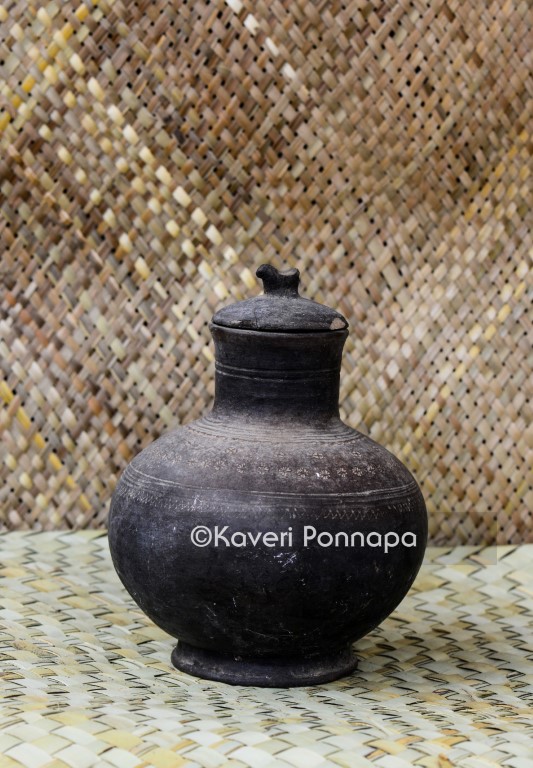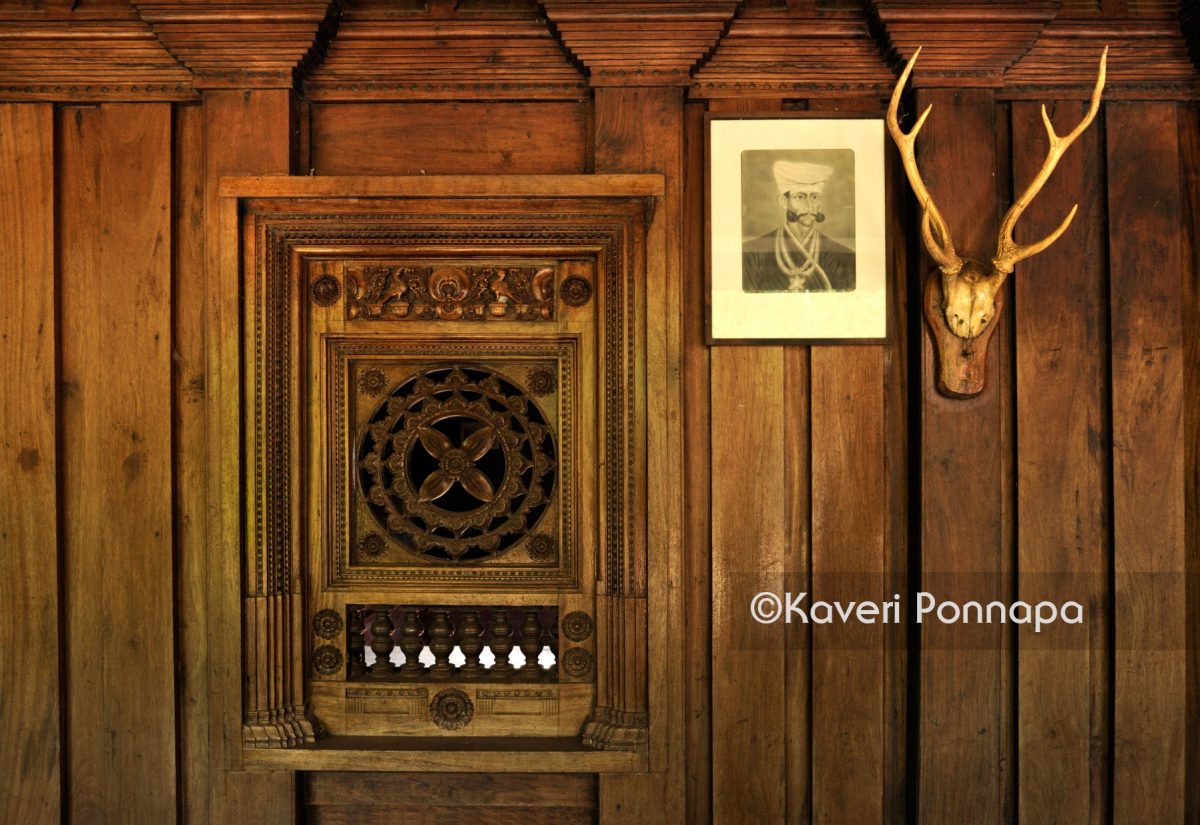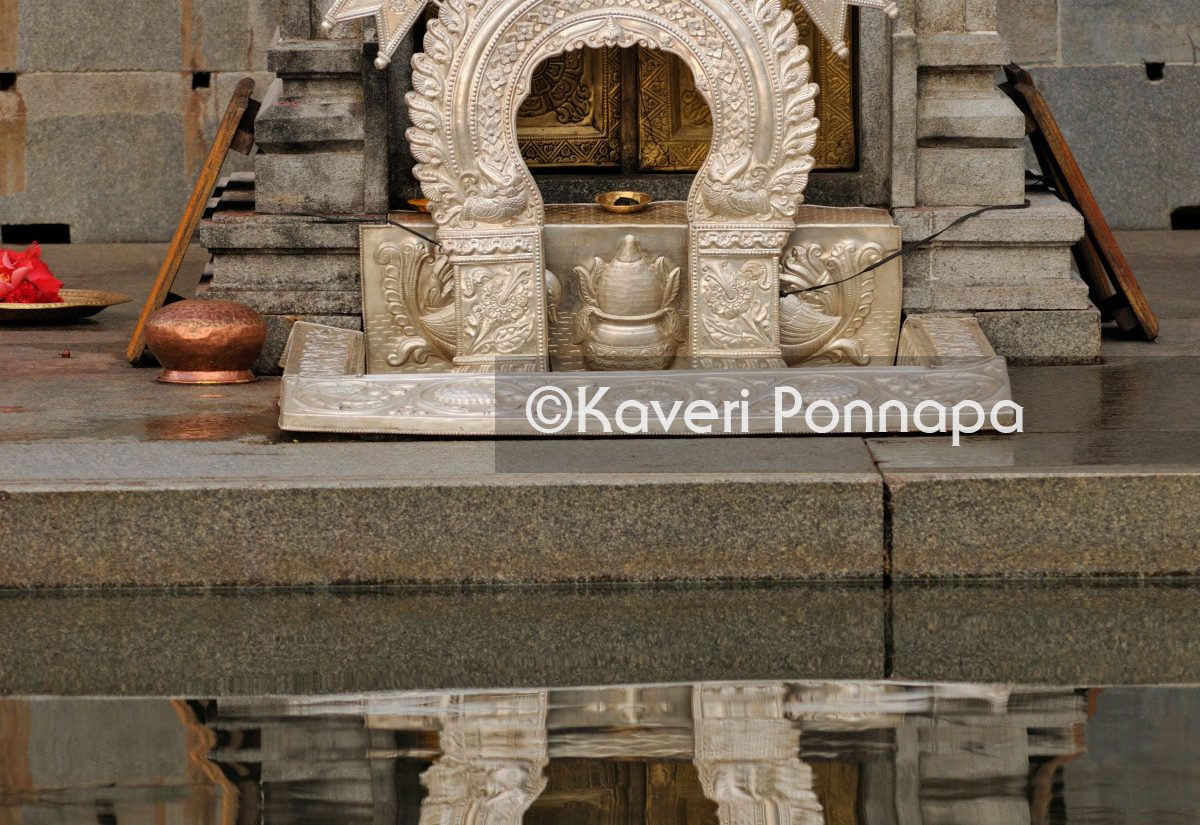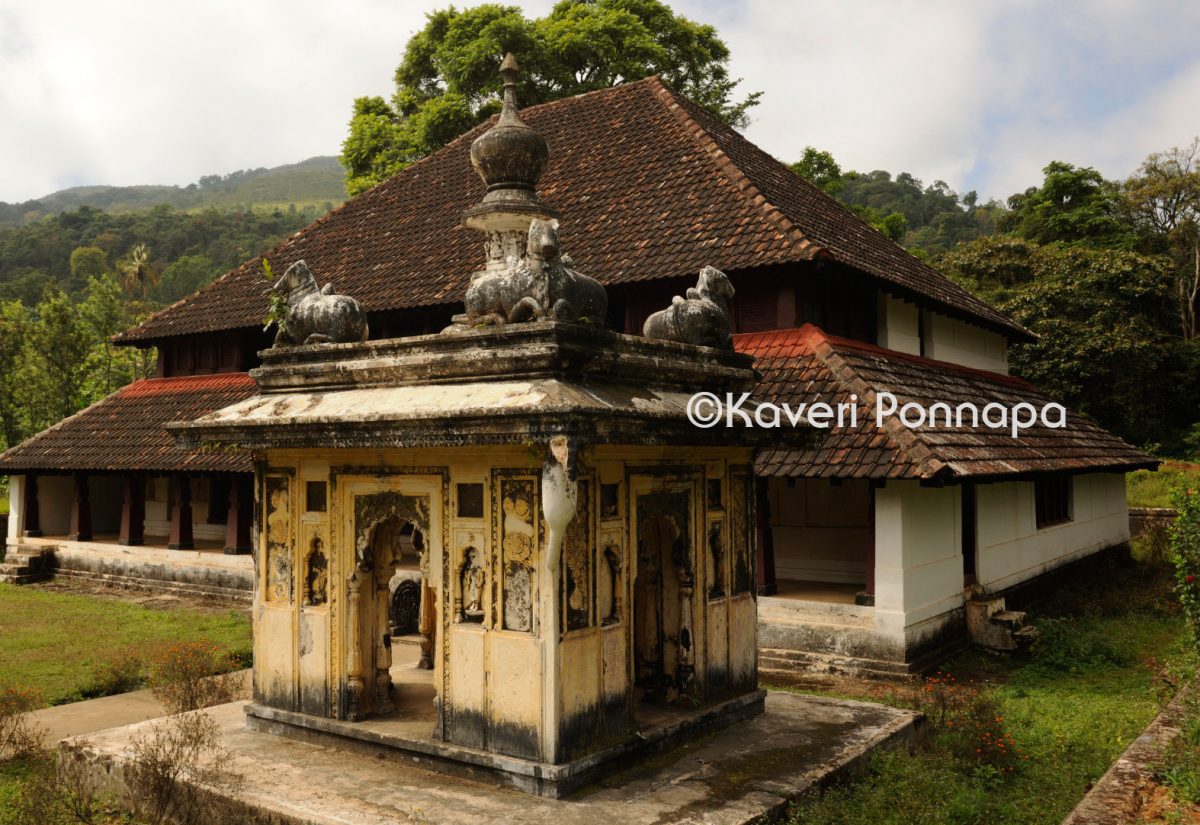Decorated and carved noolputt wara. — From the collection of BP Appanna and Ranu Appanna
Wooden press for making noolputt (steamed rice noodles). The wooden presses have a two legged base, at the center of which is a cylindrical hollow...
Interior of a chekala or sakala, terracotta steamer, showing the perforations that allow steam to rise and cook the food placed on a higher tier.
Earthenware water storage pot used in an ain mane. — From the collection of BP Appanna and Ranu Appanna
Large terracotta pot for cooking curries. Food slow-cooked in these pots over a wood fire takes on an added depth of flavour. For dishes such...
At Kenjerene Ur mand (Urë mandë), Kunjila Village, the day after the ritual harvesting of the newly ripened rice crop, clans gather to dance puthari...
An indispensable part of the Kodava kitchen, the sakala or chekala is a multi-purpose steam cooker, used to make paputt, kadambutt, noolputt and taliyaputt. The rounded...
Terracotta canteens with flattened sides for carrying and storing liquids. The smaller canteen was used to carry drinking water. The larger was used to store...
A vessel used to store curd, buttermilk, honey, and vegetable seeds for the next planting season.—From the collection of BP Appanna and Ranu Appanna
Ain manes, the ancestral homes of Kodagu, house the spirit of the founding ancestor of each individual descent group and were the focus for a...
The river Kaveri, ancient and beautiful, wells up from a source high in the western hills of Kodagu, its presence is woven into the lives...
Aramane, or Nalknad or Nalnad Place, the strategically located retreat of the rajahs of Kodagu lies in the heart of the countryside at the base...
In 1885, the Swiss-German missionary, the Rev. Hermann F. Moegling described the landscape of Kodagu as follows: “The aspect of Coorg presents an entire forest....


